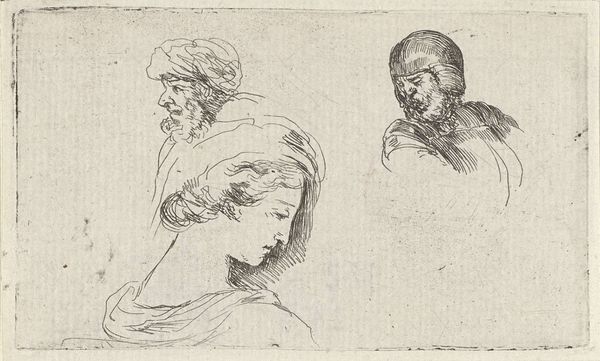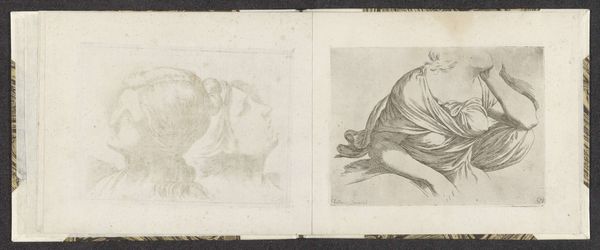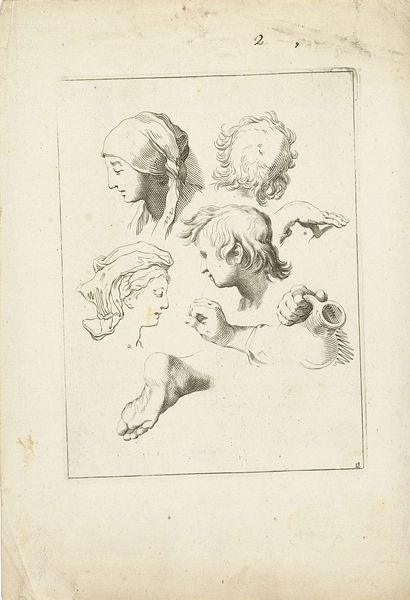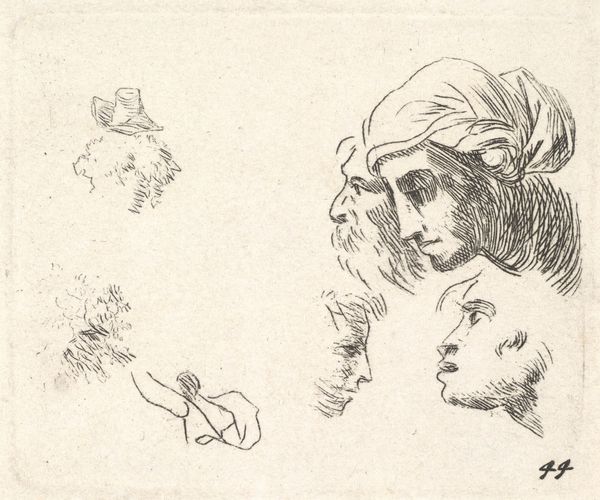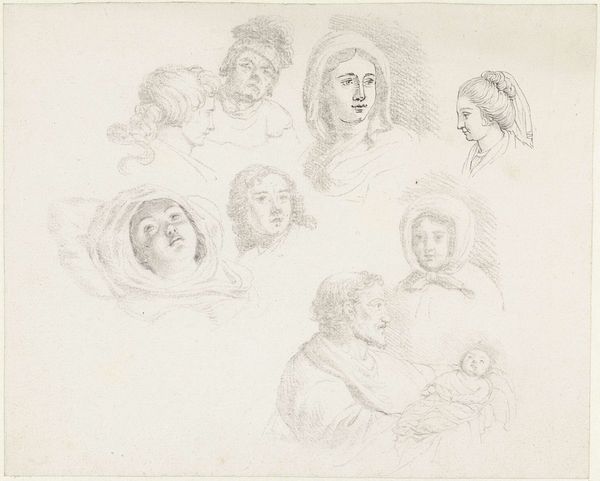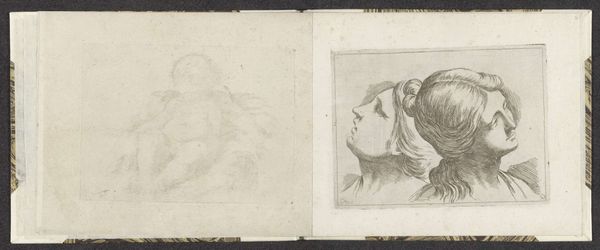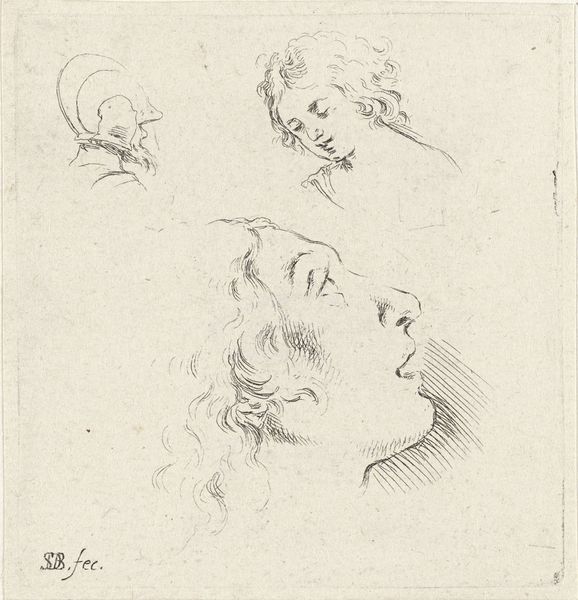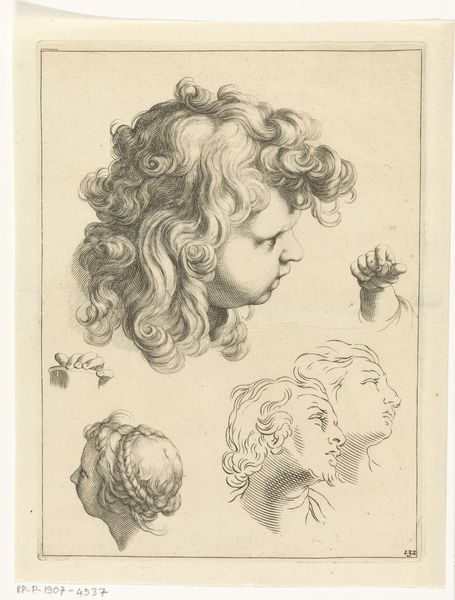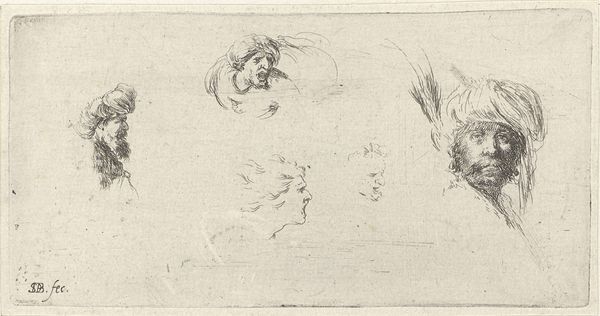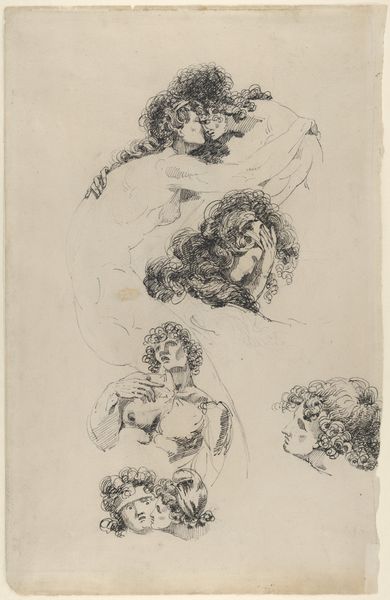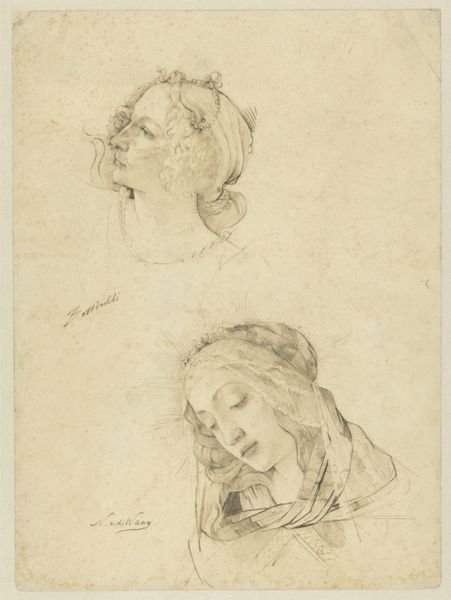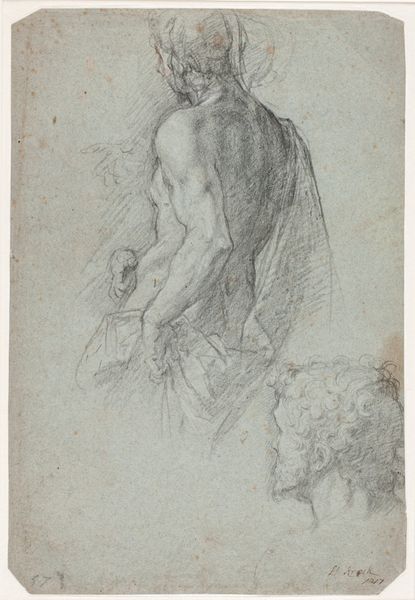
drawing, pen
#
portrait
#
pencil drawn
#
drawing
#
light pencil work
#
quirky sketch
#
baroque
#
pencil sketch
#
figuration
#
11_renaissance
#
personal sketchbook
#
sketchbook drawing
#
pen
#
pencil work
#
sketchbook art
#
fantasy sketch
#
initial sketch
Dimensions: height 74 mm, width 59 mm
Copyright: Rijks Museum: Open Domain
Curator: Looking at this intriguing drawing, I'm struck by its intimate, almost casual quality. There's a rawness to the sketch that feels quite modern, even though it's far from that. Editor: Indeed. We’re observing "Three Heads of Women and a Foot," a pen and pencil sketch by Stefano della Bella, dating from sometime between 1620 and 1664. It resides here in the Rijksmuseum. I'm fascinated by its provisional nature— it resembles a page torn directly from the artist's sketchbook. Curator: Precisely! See how della Bella uses hatching to define form and volume. Note especially how economical the lines are in suggesting drapery and hair, the swift gestures giving shape to the countenances. And that singular foot…an intriguing addition. Editor: It speaks to the role of the artist as an observer and documentarian, not merely of grand events but of everyday life, or perhaps preliminary studies for larger projects. The foot, isolated as it is, pulls my focus onto class depictions of the time as well as religious undertones related to the holy feet of saints as seen in the feet of Christ. Curator: The stark composition heightens the visual experience— three faces turned away from each other. Note how each expresses different emotions. And it raises questions. Were they actual studies of real individuals, or more fantastical visions emerging from della Bella's imagination? Editor: Perhaps the latter. Such grouping in baroque-era portraiture invites consideration of ideal femininity versus social realism; an era where one's societal status largely influenced visual art expression. Curator: What I admire most is its unassuming presence. This isn't some grand history painting, it’s an invitation to observe the world with artistic intent, as we learn, appreciate, and interpret social identity formation. Editor: Absolutely, its power lies in its accessibility. Della Bella’s piece shows a fragment of lived experiences. This challenges us to reconsider value assignment to both people, subjects, and our visual engagement with them within societal institutions. Curator: I leave seeing the sketch as less fragmented and much more wholistic as a result. Editor: A delightful example of how considering social history can reframe the impact and significance of artistic compositions.
Comments
No comments
Be the first to comment and join the conversation on the ultimate creative platform.
